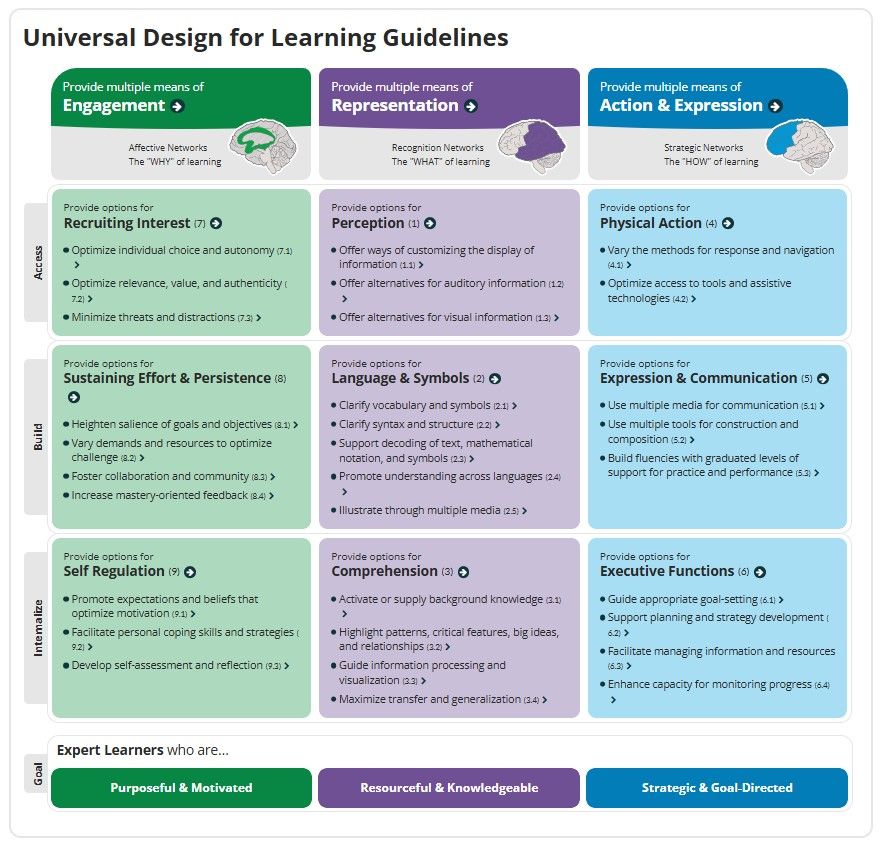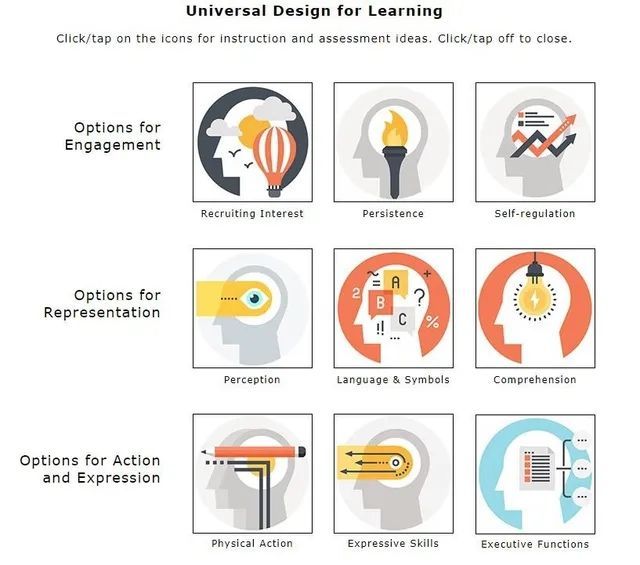Universal Design for Learning

Big Ideas
There is no such thing as an average student. All students have different learning profiles with skill variations in areas such as memory, task completion, reading, math, motor skills, social skills, executive functioning, and more. Instruction design for the average student is actually not designed for anyone. Instruction must be adaptive.
Universal Design for Learning (UDL) is a set of principles designed to guide curriculum and lesson development to ensure that all individuals have opportunities to learn and can quickly engage with the instruction. Providing academic options for engaging in instruction, interacting with the content, and expressing understanding within instructional activities will support all students in achieving the Florida B.E.S.T. Standards.
An interactive webpage with ideas on how to enhance instruction and assessment by incorporating the principles of Universal Design for Learning. Based on the Maryland UDL Wheel.
The Myth of Average
During the industrial revolution, statistical averages became the benchmark for measuring human potential. The "average" person is born. That "average" is considered "normal." Working with an average enables scale. Averages are used to design and define everything we create to provide broader access to products and services, including education and learning environments.
The problem is that "average" doesn't exist. Modern science shows us that, because we are highly variable, averages don't effectively measure individual talent. All of us have a jagged learning profile. If we measure our individual potential the result will be a unique collection of strengths and weaknesses for each of us.
Learning environments designed on average are actually designed for nobody. Instruction designed for the "average" destroys talent. We need to incubate and grow talent of the broadest kind to thrive in the 21st century.
We need to design to the edges.

Universal Design for Learning (UDL)
UDL is a framework to improve and optimize teaching and learning for all students based on scientific insights into how humans learn. The three UDL principles guide instructional design through the integration of multiple means of options for engagement, representation, and action/expression.
Engagement (Affective Networks: the "Why" of learning.)
- Recruiting Interest
- Sustaining Effort & Persistence
- Self-Regulation
Representation (Recognition Networks: the "What" of learning.)
- Perception
- Language & Symbols
- Comprehension
Action & Expression (Strategic Networks: the "How" of learning.)
- Physical Action
- Expression & Communication
- Executive Functions
The UDL Guidelines can be used by educators, curriculum developers, researchers, parents, and anyone else who wants to implement the UDL framework in a learning environment. These guidelines offer a set of concrete suggestions that can be applied to any discipline or domain to ensure that all learners can access and participate in meaningful, challenging learning opportunities.




